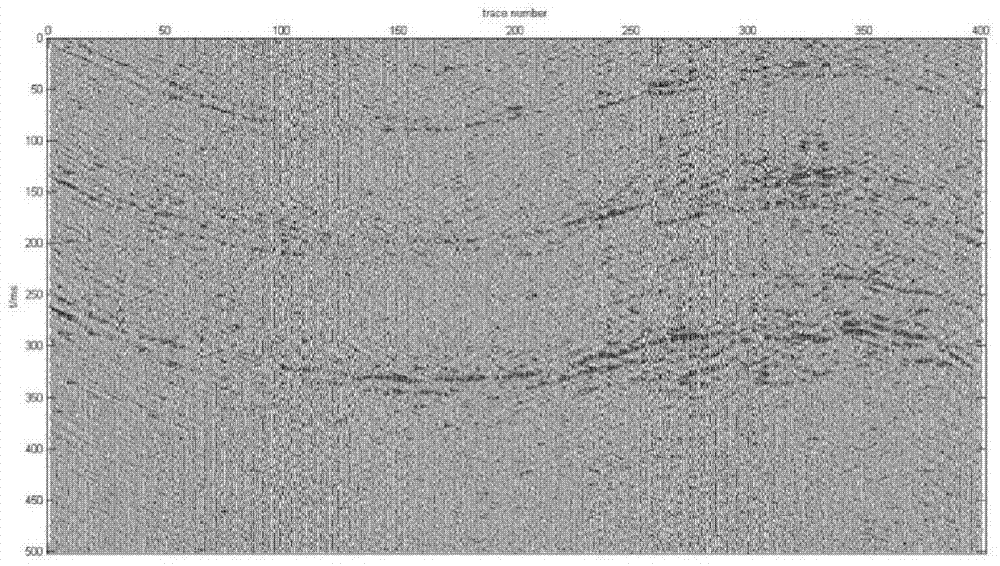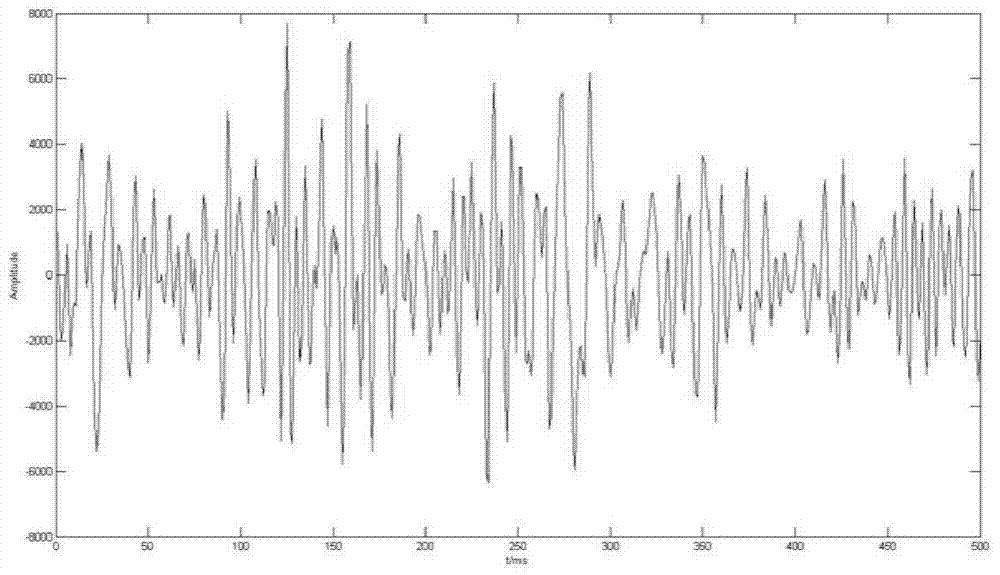A Time-Frequency Peak Filtering Method of Seismic Signals Based on Born-Jordan Time-Frequency Distribution
A technology of time-frequency distribution and peak filtering, applied in seismic signal processing, seismology, geophysical measurement, etc., can solve the problem of unsatisfactory denoising effect, achieve ringing elimination, good suppression effect, and good effect Effect
- Summary
- Abstract
- Description
- Claims
- Application Information
AI Technical Summary
Problems solved by technology
Method used
Image
Examples
Embodiment Construction
[0041] The present invention will be specifically described below in conjunction with the accompanying drawings:
[0042] Step 1: Input the noisy seismic section to be processed (e.g. figure 2 shown), read each seismic data cyclically.
[0043] Step 2: Perform the following amplitude normalization processing on each seismic trace data of the read-in seismic profile with noise, and the calculation formula is:
[0044]
[0045] In the formula, s(t) is the read seismic data containing noise. Set a=0.5 and b=0 during calculation, and select the 20th track as an example to perform amplitude normalization processing. The results are as follows: image 3 and Figure 4 shown (before amplitude normalization as image 3 As shown, after amplitude normalization, Figure 4shown).
[0046] Step 3: Code each track of the seismic data containing noise as the instantaneous frequency of the unit amplitude analytical signal to obtain the analytical signal to be processed. The calculatio...
PUM
 Login to View More
Login to View More Abstract
Description
Claims
Application Information
 Login to View More
Login to View More - R&D
- Intellectual Property
- Life Sciences
- Materials
- Tech Scout
- Unparalleled Data Quality
- Higher Quality Content
- 60% Fewer Hallucinations
Browse by: Latest US Patents, China's latest patents, Technical Efficacy Thesaurus, Application Domain, Technology Topic, Popular Technical Reports.
© 2025 PatSnap. All rights reserved.Legal|Privacy policy|Modern Slavery Act Transparency Statement|Sitemap|About US| Contact US: help@patsnap.com



